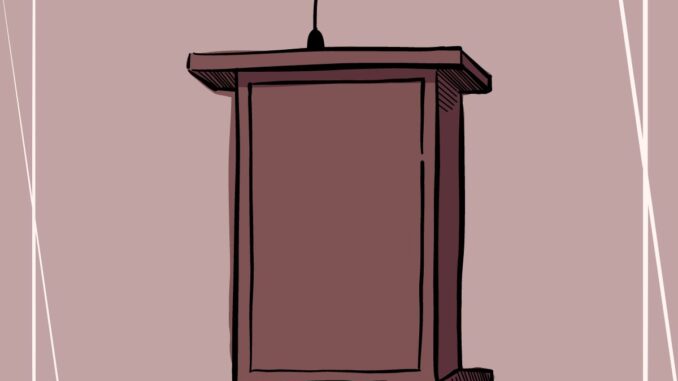
By Ellie Cooper
Stanford University President Marc Tessier-Lavigne resigned last summer after inaccuracies in a publication she advised.
The University of Pennsylvania’s Liz Magill announced in December that she was stepping down after giving clumsy testimony before Congress on antisemitism. Harvard University president Claudine Gay resigned on Jan. 2, 2024, after only six months in her position.
On March 28, Hood President Andrea Chapdelaine announced she had accepted a position as president of Connecticut College, whose previous president resigned following student protests over a plan to hold a fundraiser at a country club with a history of discrimination.
The role of a college president has become more challenging.
According to U.S. News, a 2023 report from the American Council on Education found that in 2022, the average tenure of college presidents stood at almost six years, marking a decrease from about eight and a half years observed in 2006.
The presidents are attempting to lead colleges at a time of rising tuition and increased questions about the value of a college degree. Compounding the pressure are disputes on free speech, bans on DEI and concerns about faculty salaries, campus safety and students’ mental health.
“It is a very public job, such that just about everything you say and do is under constant scrutiny,” Chapdelaine said. “I think being a college president is especially hard right now, given the current global conflicts and war, political polarization, and erosion of government and public support for higher education.”
When Chapdelaine came to Hood in the fall of 2015, it was her first time as a college president.
“It was a big step from helping the president at my former college lead to being the one in charge,” she said. “It takes time to figure out how to balance all the competing demands on your time, while also being present and accessible to faculty, students, staff, alumni, trustees.”
She said one change that affects everyone is the increased federal regulations and reporting requirements and decreased federal aid for students and indirect support for colleges and universities. The needs of students also change over time. That’s when skills in adaptivity provide opportunities for excellent education that is accessible and equitable for students.
“You have to be able to keep all the trains running on a daily basis, but you also have to be looking far down the track to see what is coming,” Chapdelaine said. “You have to be ready to provide the curriculum, experiential learning opportunities, extracurricular activities and resources students need before they arrive on campus.”
While Chapdelaine had to learn about the college she would lead, Julia Jaksen, the president of McDaniel College, had spent her professional career at her school.
“As provost, I led several college initiatives such as the establishment of the Center for Experience & Opportunity, which is our one-stop shop for experiential learning,” she said. “The fact that I know this place, have built so many relationships over the years, and have been involved in so many of our initiatives has enabled us to keep our positive momentum.”
But Jaksen noted that the persistent unpredictability of the admissions terrain poses significant pressure on all higher education institutions, particularly independent colleges. Adapting to fulfill market demands stands out as a vital strategy for tackling these obstacles.
Common duties of college presidents entail raising funds, maintaining budget equilibrium and serving as the prominent leader, representative and ambassador of the institution.
Chapdelaine said many educational institutions are grappling with enrollment and financial hurdles, yet Hood has maintained resilience due to the proactive approach to adapt and innovate.
In a climate of shifting leadership and institutional challenges, recent events highlight the evolving landscape of college administration. As colleges navigate these complexities, adaptability and proactive strategies emerge as crucial elements for sustainability and growth in higher education leadership.




Be the first to comment